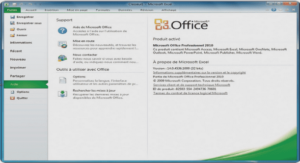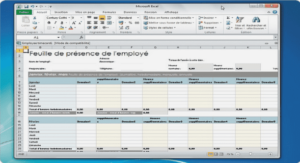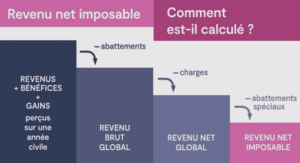A software-defined network attempts to make a network by separating it into two systems ; the primary system is the management plane that provides performance and fault via internet flow IP6 SNMP and conventional alternative protocols, it generally handles configuration management of the SDN criticism devices and perceive the configuration loaded with these details. The controller will request supported desired needs like QoS levels. The controller conjointly performs link management between devices. The second system is the information plane that is chargeable for forwarding traffic to the chosen destination; switches will either be dependent on the controller to create forwarding choices or make a choice on their own.
The control plane configures affiliation methods or flows into the information plane through the employment of an impact protocol. The controller employs the management protocol in a very software package outlined network to perform necessary operate like affiliation setup once attempts to speak with another host over an SDN the primary packets from the shopper involved the new flow are used. Forwarding call will be created domestically by the switch or if the switch must raise the controller what try to, if the switch determines that it must ask the controller, therefore via secure channel mistreatment the control protocol. The controller decides supported policies if the flow ought to be granted; If allowed, details regarding the flow might be entered into the controllers’ affiliation table. The controller may then send directions to program the switches within the best path on the information plane; then the flow would be directed through the network.
Controller Benefits
Centralizing a number of all of the connection has many advantages. Thanks to the configuration policies within the controller, some connection requests might be born such GOS attacks and increased discovery traffic. The policies on the controller that are leveraged to create selections on flows will be supported ranges of information science addresses, time of day, and alternative characteristics. SDN conjointly claimed to beat measurability problems; it’s unlikely that one controller would be processing all of the connection requests for all of the access points on the network. The problem will be managed during several alternative ways which exist. The primary plan is to interrupt up the network into multiple management and information planes. Policies will then be synchronous across multiple controllers. Every controller still sets up connections end-to-end even once another information plane is concerned. A second thanks to unloading number of the process on every controller is to allow the switch receiving the initial connection requests to create some forwarding selections, permitting the switches to create most or some of the forwarding selections give support for surroundings that are not able to commit 100% to a protocol. Traffic analysis of a software-defined network comes in 2 major formats. Usually, the switches and routers during a software-defined network are SNMP compatible and that they will generally export some kind of NetFlow or information science mounted information even the controller might be found out to export flows from its connection table, guaranteeing that every detail is obtainable for network traffic analysis. SDN has gained tremendous momentum as a result of a minimum of six of the biggest networks (Google, Facebook…) within the world are supporting it. The advantages of SDN may lead to the flexibility to buy cheap switches that have little or no resident computer code and process wants. Centralization of the forwarding database or FIB permits optimum routs to be calculated deterministically for every flow, end-to-end across the topology. SDNs dynamically responds to application needs. SDN optimize the use of the network, while not sacrificing service quality. SDNs will filter packets as they enter the network and therefore these switches can act as straightforward firewalls at the sting of the network. SDN switches will send sure suspicious traffic flows to higher-layer security controls such as IPS systems, application firewalls, and information loss interference devices. SDN switches that support the modification of the packet headers will be ready to operate as an easy cost-efficient load equalization device. SDN controllers will be clustered for fault tolerance and high handiness. Interest can increase once applications utilize the centralized management obtainable in most SDN architectures.
Privacy Preserving
By growth of Wi-Fi network inside residential buildings, enterprise attempts for enhancement of Quality of service of the users and their Quality of experience. By considering that Quality of experience usually come from user side, preserving the privacy of the collected data is important. How to use the collected user experience, which in this case is the user footprint, without exposing their private data is still challenging. In this work, we will choose the raw data without looking at the running application, which result in a level of security and privacy in our handover detection pipeline.
System Description
This work has been done based on ETS Wi-Fi residence project. The ETS students are heavy users of several different internet services, and most of them spend their spare time in the residence. The dorm contains over 75 Wi-Fi access points, all of which can be optimized in relation to each other and to the users accessing them. The controller system has been designed and implemented by XcellAir. The central controller includes : SON is automated management of the wifi network, providing AP self-provisioning, self-healing, radio environment mapping, and monitoring. RRM is a powerful radio resource optimization tools to dynamically provision and tune radio resources.
There are two essential modules in the controller called Self Optimization Network (SON), and Radio Resource Management (RRM). SON will create a granular radio map, which can give a dynamic view of RF environment (Where the APs are, what channels they are operating on, the received signal strength from APs and location down to a 2m*2m 2-dimensional “Pixel” level).
RRM is an optimization algorithm which is running on the cloud server and interact with the AP to set and change the channel, power levels, and other parameters .
Baseline Setup
For the baseline system, we assumed a Wi-Fi network with a centralized controller on top of the system. The network is comprising N APs where several mobile users using the network. The system is considering time as an interval, and each interval t, the system logs the user’s metrics. Like other traditional systems, When a user is moving around, the handover mechanism gives an option to mobile user to change the serving AP, based on the signal strength. The controller on top of the centralized system continuously monitors the RSSIΓ(t) of the users and the serving AP at the time A(t). When signal strength (RSSI) of users falls below a predefined static threshold Γ for a given time, the handover mechanism starts. Γ(t) > Γth
Radio Resource Management (RRM)
When Deploying a large-scale Wi-Fi network, it is important to have the ability to discover and auto-provision managed access points. A managed AP is an access point deployed by the operator, and manual configuration of APs in a large network becomes a non-scalable proposition. SON discovers and registers Service Provider Manages APs in its databases. A core feature of Wi-Fi SON is a real-time, geo-mapped radio environment map that provides a view of Managed and Un-managed APs in the system and depicts channel usage and signal strength level on a angular pixel basis .
CHAPTER 1 INTRODUCTION |




